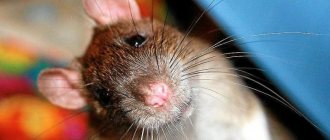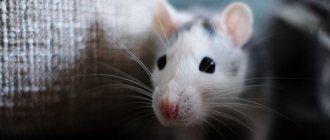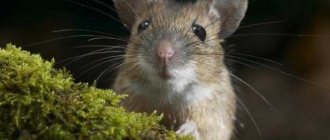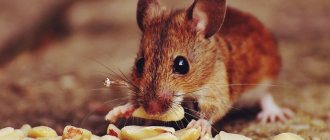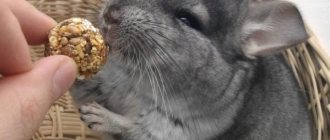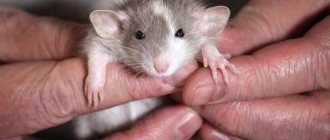A little history
Who knows where this myth came from.
Most likely, the traces lead to the Middle Ages. Before the invention of the refrigerator, storing food was much more difficult, so everyone got out of the situation as best they could: meat was attached to a hook under the ceiling, grain was kept in bags or barrels, and large circles of cheese were covered with wax or wrapped in linen. In those days, a hungry mouse agreed to eat anything. Meat hanging from the ceiling was harder to get, wheat or cheese was much easier to access. But the loss of several grains from the bag is not so noticeable, and teeth marks are treacherously visible on a piece of cheese. This may have led many to believe that mice love cheese. Even if in fact they only eat it because it turned out to be their only prey.
Myths and realities
In ancient times, when food was a great luxury, people had to carefully hide it from various pests. Therefore, rodents also had difficulty obtaining food. And only this curd processing, which requires certain storage conditions during preparation, could not be kept in a closed container. In connection with this, open access to the product gave rise to the myth that this is a favorite mouse treat.
Despite the fact that mice can eat many foods that people also eat, not all of them are healthy for these tiny rodents. Therefore, to maintain the health of your pets, you need to feed them correctly.
Favorite characters
According to another version, perhaps this image was simply well played out by animators and caricaturists who were able to perpetuate this myth for many years. Today it is much easier to imagine and draw a mouse with a delicious slice of cheddar than with a crust of bread and a few grains of rice.
The creators of the popular animated series “Chip 'n' Dale Rescue Rangers” went even further. One of the rescuers is named Rocky, and his full name is Roquefort - in honor of the famous cheese. His father is Charlie Cheder and his mother is Katie Camembert. The main weakness of this daredevil is his incredible love for cheese; from the mere smell he falls into a trance and tries with all his might to get to the coveted piece. But the author’s idea hardly has any connection with reality. Rather, it is a fiction, nothing more.
What other fairy tales exist about this?
The next version of mice’s pseudo-love for cheese lies in the shortage of food in the homes of medieval residents.
Like, in those days there was tension with food
. She was sorely missed. There were minimal supplies in the house. As a result, it was difficult to establish the fact that mice were eating food.
Only teeth marks on the cheese served as clear evidence of the presence of mice in the house. This is what this version is based on, explaining the love of mice for cheese.
The next point is related to cartoons. The stereotype of a mouse with a slice of cheese was perpetuated by cartoonists. The rodent looked much better this way
than with some kind of grain.
Even mice don’t eat this kind of cheese...
photo internet
It is important to note that the amount of non-dairy fat in some brands exceeded 80%, or even reached 100%. Thus, the “cheese” anti-TOP included the following, LLC “Starokozatsky cheese”, PJSC “Bashtansky cheese”, LLC “Andrushevsky butter cheese”, TZOV “Bimol” and a number of other companies, in whose cheeses dairy product substitutes amounted to 100%
Thus, the “cheese” anti-TOP included the following, LLC “Starokozatsky Cheese”, PJSC “Bashtansky Cheese”, LLC “Andrushevsky Maslosyr”, TZOV “Bimol” and a number of other companies, in whose cheeses dairy product substitutes amounted to 100%.
“Shostka”, “Komo”, “Zvenigora”, “Ferma”, “Our Milkman” - this is exactly what the list of manufacturers with a high content of natural fats looks like.
According to experts from the public organization, the most important thing in such a situation is the manufacturers’ designation of the origin of these fats.
If the labeling of a cheese product does not contain information about the manufacturer of the so-called trace fats, then this is dangerous to human health.
To avoid falling into the cheese trap, you should avoid buying this kind of dairy products at markets and fairs. It is in spontaneous markets that there is a very low level of control over product quality.
The conclusions obtained as a result of this study are already in the State Food and Consumer Service.
The reason for this is the ban on inspections of the business sector, according to the law on a moratorium on scheduled inspections of entrepreneurs until the end of 2022.
Scientists' answer
Scientists from the UK were interested in the question of why mice love cheese. They conducted a number of experiments with mammals.
Experience has shown that mice prefer to eat plant foods, and they do not like the smell of cheese at all. Particularly odorous varieties evoke a feeling of danger, and they try to avoid the suspicious object.
An animal living in the wild will eat cereals and fruits, and will only eat other food in case of severe hunger. In the forest or in the field you will not find products created by man. Therefore, it is not surprising that the mammal loves natural food. It looks and smells safe.
Scientists from the British organization Pest Control UK became interested in the results of their colleagues and conducted their own experiment. They used traps with various baits:
- cheese;
- apple;
- chocolate.
The results showed that mice eat cheese. The trap was set with this delicacy, and they liked to run into it the most. But chocolate did not arouse any interest among the animals.
It is likely that the experiment involved different species of mice and different types of treats, which is why the results are so different from each other.
On a note!
Exterminators assure that you should take sunflower seeds, flour, wheat, and unrefined oil as bait. Pests love this kind of food more.
Interesting Facts
- Do mice eat each other?
In fact, mouse cannibalism exists. This happens, for example, when a new individual is introduced into an established team. At the same time, even a fellow tribesman who has been absent for a long time can be mistaken for a “newcomer.”
And it’s not worth talking about the fact that sometimes mice eat their offspring - everyone already knows about this. There may be several reasons:
- a lack of micro-, macroelements, vitamins in the mother’s diet will certainly lead to eating the offspring;
- at the birth of weak, sick offspring, the female carries out a kind of “evolutionary cleansing”;
- the new mother is a firstborn;
- multiple births, when the mother is not sure that she can feed all the cubs and eliminates the “extra” ones.
- Mice and cheese
Everyone remembers from cartoons that mice love to eat cheese. Is this really so?
Scientists, after conducting a series of studies, confidently reported: mice are herbivores and in nature do not encounter cheese, and therefore cannot love it!
Naturally, for every statement there will be anti-scientific figures trying to prove the opposite. So, several enthusiasts from the UK conducted their own investigation. Over the course of a week, they set traps with apples, chocolate and cheese in areas densely populated by animals. So, the overwhelming majority (85%!) of mice “pecked” at the cheese bait.
Which one should you believe? Decide for yourself, especially since a white mouse eats everything offered to it at home. But will all this food be healthy?
Where did the statement come from?
Adults are sure that the myth was spread by animators and illustrators of children's publications. But even in ancient times, people believed that small animals love to dine on this aromatic delicacy.
Previously, when there were no poisons and chemicals, the fight against mice consisted of keeping all supplies safely hidden in jugs and cabinets. The exception was cheese. It should have been left uncovered to mature. So the mice had to gnaw it out of hunger.
Animators made the image of an animal with a fragrant treat in its paws very popular. Now many are sure that mice really love cheese.
The main diet of rodents is sweet fruits and cereals. In nature, they build nests in fields where they can easily get grain. The pest's sensitive nose does not tolerate strong aromas and artificial products. Mice do not like cheese and will choose other foods over it if given a choice.
Ready-made feed
The simplest and least burdensome option for organizing the nutrition of any pets was and remains industrially produced food. There is one for mice too.
When choosing the right one, you always pay attention to both the manufacturer and the ingredients. Foreign products are still considered the best food for mice. In any case, it is always necessary to carefully study the composition on the packaging and/or, if possible, try to visually determine the percentage of ingredients
In any case, it is always necessary to carefully study the composition on the packaging and/or, if possible, try to visually determine the percentage of ingredients.
You should not purchase the following mixtures:
- with a high content of oats or grass granules,
- containing dyes,
- with a predominance of sunflower seeds, cumin or peanuts, these products are undoubtedly worth including in the diet, but too much of them will lead to obesity,
- universal food for all types of rodents, yet the nutritional needs of all organisms, and even more so of representatives of different species, differ, and in some cases the difference is colossal.
What mice eat at home and in nature
If you have decided to keep a rodent at home, then in addition to the integral details that ensure a comfortable life for your pet and care for it, it is important to know how to create an impeccable menu. Food should be tasty and include all the necessary vitamins
The easiest way, for example, is to use ready-made balanced industrial food specifically for mice. However, some are worried about quality and cook their own food. The nutritional composition is entirely determined by what small animals usually eat in natural conditions.
It can be:
- grains: barley, wheat, rye, oats;
- nuts and seeds: peanuts, hazelnuts, walnuts, sunflowers;
- fruits and vegetables: zucchini, carrots, pumpkin, cucumbers, bananas, apples;
- greens: dill, parsley, grain sprouts.
What do bats eat at home and who eats them in the wild?
Most people have no idea what to feed in the apartment; some even consider them vampires. In fact, there are several categories, each of which has its own feeding characteristics (insectivores, carnivores, sunbirds and others).
Those who keep an animal at home should find out what it was fed with in the wild. Based on this, select the necessary products.
Many bats prefer condensed milk diluted with water. Carnivores have an animal instinct; they love finely chopped meat, offal, and insects (worms, cockroaches). Other species require feeding with a variety of fruits, including bananas. They prefer milk and fresh water to drink.
In nature, bats have many dangerous enemies. Considering them as food, nocturnal birds of prey (kestrel, eagle owl), marten, ferret, ermine, weasel, and wild cats are able to hunt the animals. Sometimes even forest mice and rats do not allow them to live, making their way inside the shelter in winter, and do not disdain their relatives.
Do mice eat tomatoes?
Rodents hibernating inside a greenhouse pose a particular danger to those who breed tomato seedlings. In summer it’s hearty outside, but when it’s cold, you can taste young shoots of plants and ripening fruits. Pests feed only on cotyledons; if the remaining sprouts are sprinkled with ash, they will not be touched.
There are people who are not embarrassed by such a neighborhood. They specially plant seedlings with reserves for little gray animals. And holes and passages in the floor are regarded as good natural ventilation for their greenhouse.
What do field mice eat?
The vole can often be found in nature in meadows, forests, and steppes. Its nutrition, first of all, depends on its habitat.
It can be:
- herbs, their bulbs, plant roots;
- insects, larvae;
- seeds, cereals;
- tree bark, leaves, buds, cones;
- mushrooms, nuts, berries.
People have been debating whether mice eat cheese for a long time. A group of English scientists decided to verify this fact or refute it several years ago. You will learn about how the experiments ended and whether rodents really eat cheese in this article.
Myths and realities
In ancient times, when food was a great luxury, people had to carefully hide it from various pests. Therefore, rodents also had difficulty obtaining food. And only this curd processing, which requires certain storage conditions during preparation, could not be kept in a closed container. In connection with this, open access to the product gave rise to the myth that this is a favorite mouse treat.
What do mice eat? Many of us know well what these rodents love most.
Most often, bread and wheat immediately come to mind. It’s not for nothing that people have come up with so many tricks and traps to catch these furry animals. This struggle has been going on for thousands of years.
Among all the ways to preserve bread, the most effective way to store grain is, after all, an elevator, because it is both reliable and convenient. To do this, it is enough to purchase elevator equipment - https://lubnymash.com/katalog, and your grain harvest will remain safe and sound for many months in the bins. But many of us assume, and others argue, that mice also love cheese. Let's figure it out and dot the i's. Let's find out the whole truth: do mice like cheese or can it frighten them? Why can cheese scare a mouse? There are certain "facts" that are known about animals. For example, everyone knows that rabbit's favorite food is. What? Carrots, of course! And mice love it. What? If you answer “cheese”, it will be correct. But do mice really love cheese? And, if this is so, then why? It would be interesting to ask the mouse itself the answer to this question. Unfortunately, she just squeaked loudly and ran away.
The belief that “mice love cheese” has existed for quite a long time. Anyone who loves cartoons may have seen the old Tom and Jerry episodes, where they show Tom trying to lure Jerry out of a hole with a piece of cheese. Mice are rodents. Like most rodents, mice typically eat fruits, vegetables and grains. Where mice live, such products are usually easy to find. However, like other rodents, mice eat almost anything, including insects, other animals, etc. Yes. even cheese! But mice love cheese? Do they prefer cheese to all other foods available? According to some scientists, the answer is probably no. First, cheese is not a food type that is readily available in areas where mice typically live. Consequently, they will not be able to develop a stable habit of it. At least rare occasions of eating cheese will not be enough to develop an addiction to cheese. In addition, mice have very sensitive noses. The strong, pungent odor of most cheeses will likely repel mice. Finally, scientific research has shown that mice tend to prefer foods with a lot of sugar. Cheese is made up of proteins that typically do not taste sweet.
This is why it will likely be easier to bait a mouse with a small piece of chocolate or sugar rather than cheese, as some of us previously assumed. Everyone loves sweets!
Contrary to popular belief, mice are not actually fans of cheese. Of course, they can eat it too if there is nothing else, a hungry mouse is not too picky, but this is far from its favorite food.
Feeding mice at home
In nature, mice feed mostly on seeds, to which animal food is sometimes added. And therefore, at home, they need to be provided with a diet determined by nature.
- Grains are the first thing mice eat. Give the crumbs grains of wheat, oats, barley.
- Seeds – no more than 2-3 pcs. in a day.
- Protein products. Mice will benefit from a small amount of boiled or raw quail eggs, boiled (without salt) chicken, peeled boiled shrimp (no more than once a week, without spices), gammarus (dried freshwater crustaceans, which can be found in fish food departments).
- Vegetables. Carrots are especially useful. But you can also give zucchini, cucumbers, sweet peppers, cauliflower and Jerusalem artichoke, pumpkin.
- Fruit (sometimes as a treat). Apples, pears, apricots and peaches, melons, grapes, bananas are suitable. Among the berries you can give currants, strawberries, strawberries.
- Nuts. Hazelnuts, walnuts, peanuts (no more than 1 nut per day).
- Greens (in small quantities). Parsley, lettuce, cilantro.
- Bread (preferably black). It can be given, but very rarely.
- Cheese. Mice love it very much, but this product is harmful to them (it causes obesity and negatively affects the liver). Therefore, it can only be offered to pets as a rare treat.
- Water. It should always be freely available, in the required quantity (at least 25 grams per day), clean, fresh.
In addition, the mice need to be given twigs - they will help the rodents grind their teeth. It is better to choose branches of rowan, apple, hazel or willow. Branches of coniferous trees (spruce, pine) are also a source of vitamin C.
When choosing vitamins, you need to rely on qualified professional mixtures, since you will not be able to choose everything you need for your pet and in the right quantity.
Amount of food
As for the size of portions, it would be reasonable to calculate the amount of food based on the weight of the animal. For a mouse, one serving should be at least 1/5 of its weight. Rodents have excellent metabolism, and therefore they can afford to eat a lot.
Homemade mixtures for mice
Composing a diet for a small animal depends entirely on what mice eat in nature. Since this is a detachment of rodents, they will mainly eat plant foods:
- grain crops such as wheat, barley, rye, some oats, etc.;
- plant seeds and nuts, for example, sunflower, walnuts, peanuts, hazelnuts, but there should not be too many of them: excess plant protein will lead to obesity and liver problems;
- vegetables and fruits - which ones to give will depend on what the mice like most, but you should offer all kinds: carrots, zucchini, cucumbers, pumpkin, apples, bananas;
- green parts of plants: parsley, dill, sprouted grains - they contain a lot of carotene and vitamin C.
Brown bread and dried fruits (raisins, prunes) are used as delicacies. It’s worth answering a fairly common question right away: do mice eat cheese? They eat it with great pleasure, but in large quantities the dairy product provokes liver problems, leading to obesity.
Plant-based treats
It is known that mice like plant foods, since in nature the animals’ diet consists of grains, tree bark, seeds, fruits, and berries (they can snack on all the strawberries in the garden beds). Snacks of animal origin (snail or slug) are consumed much less frequently by rodents in natural environments.
Therefore, if the goal is to catch a mouse, then they lure the animal with fruits and grains:
- a piece of apple, plum, as well as apricot, peach, pear;
- fresh crust or crust of bread (it is better to moisten the bread with vegetable oil);
- spoon of porridge.
Mice leave their shelters to look for food up to 30 times during the night. So there are plenty of chances to catch them.
Bread
Mice love fresh bread soaked in vegetable oil (it’s better to take unrefined bread: it smells stronger)
Pests may like sunflower oil, but they really love sesame oil: when they smell it, the animals lose all caution
In addition to black bread, baked goods, sunflower seeds and other grains are excellent lures for mice.
Muffins or bread have a dense consistency - this is an excellent bait for mice in a mousetrap: it is convenient to place on the trigger
Baked goods emit a strong odor, enough to make a rodent forget about caution.
Corn
Roasted seeds or rice, wheat, barley, any cereal, oatmeal cookie crumbs poured into a trap act like a magnet on pests. However, such products cannot be caught on a trigger - they are simply placed in a trap or poison is prepared from them by mixing in toxic substances.
Peanut butter
Make small balls from it or spread oil directly onto the working surface of the trap. Catching rodents using this product will be effective.
Is yogurt good for rodents?
Sometimes kefir can be replaced with yogurt. Yogurt must be natural and free of flavors, sugar and preservatives.
Sweet yoghurts with pieces of fruit or berries are not suitable as a treat for rats, as they contain many harmful additives and dyes.
Do not forget that a domestic decorative rat, unlike its wild relatives, can get sick and even die if fed incorrectly. Therefore, your pet’s daily diet should be balanced and consist of healthy grains and vegetables. It is impossible to often pamper a rodent with dairy products and other delicacies, because they are a supplement to their diet, and not the main food. Nutrition Read more Is milk healthy in the diet of rats?
Milk is rich in vitamins A, D, and E. The high calcium content also makes this product healthy. But your tailed pet does not need milk in the daily menu. It (in large quantities) can contribute to digestive upset and, as a result, cause diarrhea. There should be fresh drinking water in the drinking bowl every day, but milk is already a complete food.
You can offer milk to your pet rats no more than 2-3 times a week.
Remember one rule. A rat can only eat what a rodent could find in a field!
I’m not telling you my own thoughts. This is a direct message from the veterinarian from the Cobra clinic.
– Anyone who keeps rodents should be familiar with this veterinary clinic. This phrase was then repeated to me by all the doctors we encountered in our lives.
This means no food from the table.
, bread (!!!) and crackers, no processed or processed foods.
Only grain, specialized food and non-sweet, non-fatty fruits.
Bananas, watermelons and melons
should not rats They're just too sweet. Also forget
about fried and salted nuts.
Rats can be treated to
raw walnuts (once a week), or a small handful of pumpkin seeds, also raw (once a week).
Let me remind you about milk. They can't
no sour cream, no cottage cheese (even low-fat!), cheese.
milk, all kinds of curds, yoghurts and ice cream, and especially butter. Also, of course, forget
about chocolate, sweets and other sweets.
it’s not worth talking about the fact that rats shouldn’t
When getting an animal, first of all you must take care of its health! Conscious improper feeding of an animal is akin to animal husbandry - you will deliberately spoil the animal’s health, and therefore its duration and quality of life!
A piece of green apple is a great treat for an animal! But no more than a couple times a week.
If you want to treat the animal
, use special sticks with grains, biscuits for rodents, a small piece of an apple or a juicy vegetable that is not red, the color red usually means. that the product is a strong allergen. a piece of carrot, cabbage. The only exceptions are a boiled egg white or a very small piece of well-cooked chicken breast. Good sources of protein, but should not be abused. Once a week will be more than enough.
Don't love your pet...to death!) All the best).
Cottage cheese is a treat for rats
You can diversify your pet's diet with fresh cottage cheese. Give animals cottage cheese once every two weeks, without adding salt or sugar to it.
Cottage cheese is especially useful for pregnant females and nursing mothers, as it promotes milk production and significantly improves its quality.
How to prepare milk for rats?
In order for milk to benefit your pet and not harm its health, you need to boil this drink and cool it to room temperature. You should not give rats either cold or hot drinks, as this leads to gastric upsets.
Which milk is best for the diet?
Cow's milk is considered the most optimal for inclusion in the diet of rats. It is more balanced in fat content than sheep or goat.
Sour cream in the diet of rodents
Sour cream is not a very suitable product for feeding rodents, because it does not contain any vitamins and microelements that are beneficial to the health of the animal. Therefore, it is undesirable to include it in the menu of tailed pets, especially for homemade sour cream and heavy cream, which are extremely harmful to the liver of animals.
What kind of milk is absolutely forbidden for rodents?
There are types of milk that should not be consumed by your pet as they may be harmful to them. These types of milk include:
- Soy milk, as it causes increased gas formation and bloating in your pets;
- Coconut milk. This exotic thing for our area can cause allergic reactions in your rat;
- Condensed milk is also prohibited. It contains a large amount of sugar, which is harmful to the well-being of tailed animals;
Drinks made from milk powder are also harmful to your pets.
Important! Some rats have their own individual characteristics and cannot tolerate lactose, which is found in milk. Remember to be careful when offering your pet a milk drink in small portions for the first time. Monitor his behavior, see if there are any allergic reactions to this dairy product.
Can rats eat cheese?
The question of whether rats eat cheese does not raise doubts among many people, because there is an established stereotype that this product is a favorite delicacy for rodents. In fact, the animals really love cheese and will never refuse a piece of this delicacy. But it is not recommended to often give cheese to rats, since due to its excessive consumption, animals develop obesity.
Hard cheese contains a lot of salt and fat, so you should pamper your small pet with this treat no more than once a week.
In addition, not all types of cheese are suitable for feeding rodents and some of them can provoke both an allergic reaction and cause food poisoning.
Prohibited types of cheese:
- Suluguni;
- cheese or feta;
- smoked cheeses;
- processed cheese;
- products with a high percentage of fat content;
- blue cheeses.
Important: cheese should not be given to decorative rats if the animal suffers from stomach upsets or problems with the liver and kidneys.
Should you give your pets kefir?
Kefir improves digestion and is easily absorbed by the body of rodents, therefore it is a useful product for tailed pets. But it must be remembered that animals should be fed only low-fat and non-sour kefir. Also, it is strictly forbidden to give animals stale or processed fermented milk products.
Conclusion
Mice are vegetarians. They will eat seeds, vegetables and fruits faster than cheese. But this does not mean that mice will ignore the product in question. If there is nothing suitable, these rodents will eat anything, including cheese.
Sources
- https://FB.ru/post/nature/2018/6/19/27023
- https://zen.yandex.com/media/factusios/myshi-i-syr-pravda-li-chto-pervye-tak-liubiat-vtoroe-ili-eto-vrane-5e24a5eb32335400ac8d97ac
- https://apest.ru/myshi/vse-o-myshah/edyat-li-myshi-syr/
- https://klause.ru/gryzuny/lyubyat-li-myshi-syr.html
- https://KOTiKo.ru/krysy/pitanie-krys/mozhno-li-krysam-syr-moloko-tvorog-i-drugie-molochnye-produkty.html
- https://likehamster.ru/domashnie-krysy/pitanie-krys/molochnye-produkty-krysam/
- https://zen.yandex.ru/media/id/5ca4d38ad92e0900b447a942/chem-mojno-kormit-krysu-a-ot-chego-luchshe-otkazatsia-5ce80e1fb2297700b54b7f45
- https://homkin.ru/krysy/pitanie-krys/mozhno-li-krysam-syr-i-moloko.html
[collapse]
